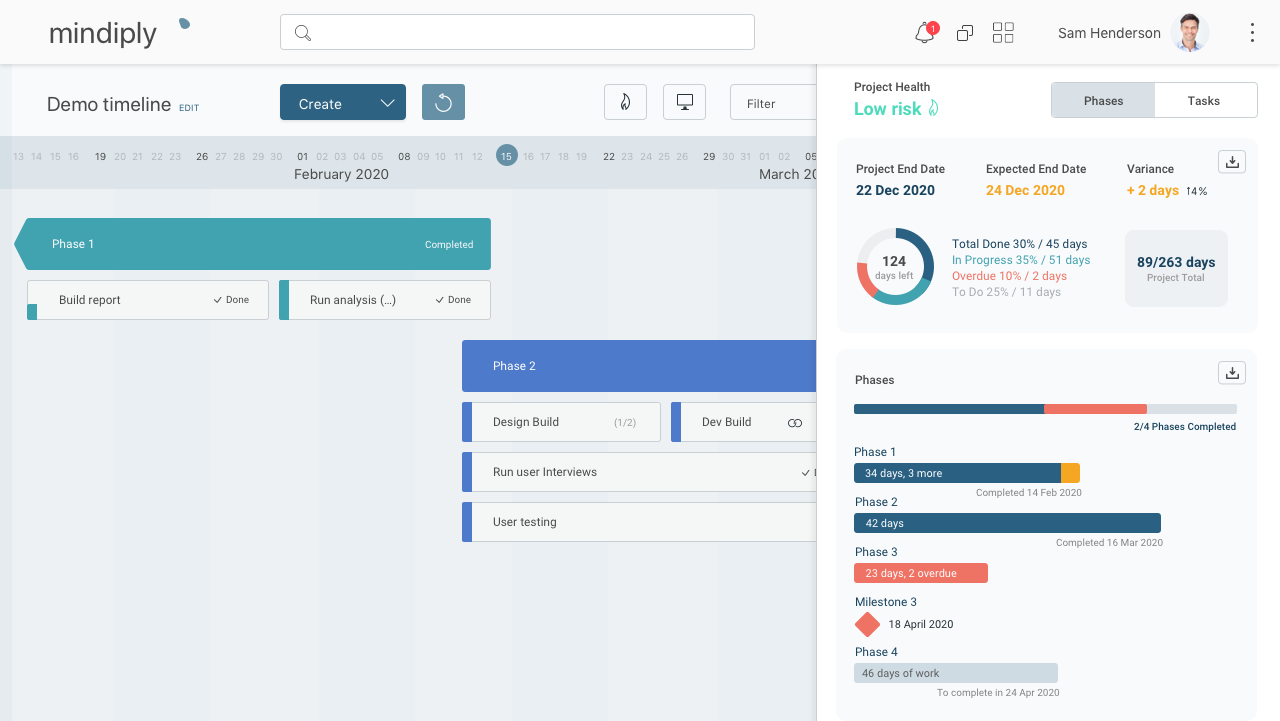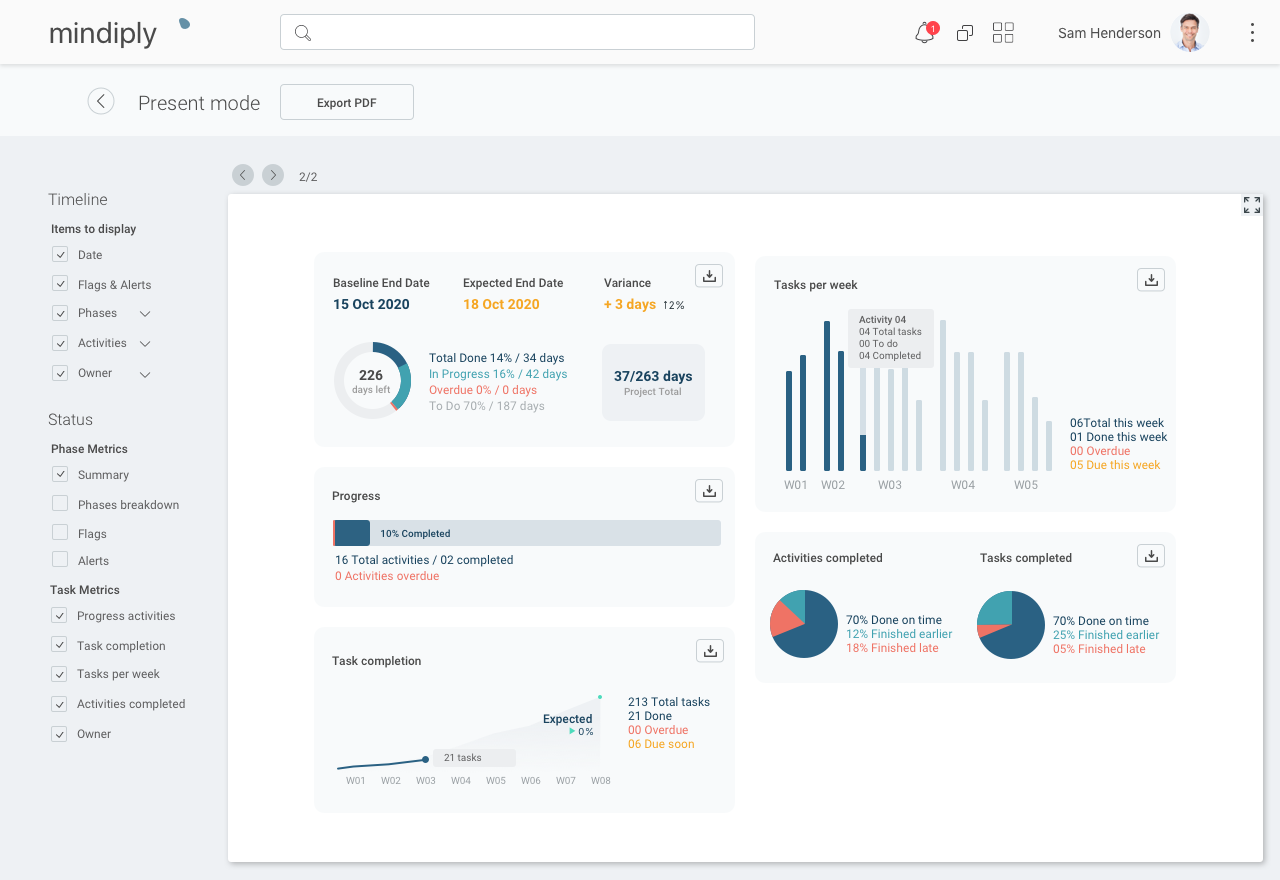
Focus: The One Thing that really matters in Project Management
Francesco Marcatto16 May 19
Table of contents
Many times when managing teams, especially on projects that have a long duration, focus can be lost. Difficulties in coordination and working effectively towards a particular goal can derail projects entirely. Understanding how to effectively deal with these issues can be a key factor in separating success from failure.
However, it’s important to understand why teams lose focus in the first place. Only by truly understanding the core of the problem, can we implement the correct behavioral and structural modifications to produce a different result.
Why Teams Lose Focus
There is a myriad of problems that can lead to “loss of focus”. Learning which specific elements are causing the lack of focus will allow project managers to make proper changes to the dynamics within and between teams.
Communication
When communication fails, projects fail. Without effective communication practices, team members are left to “guess” and draw conclusions on incomplete data. This leads to undesired results which in turn demotivates the team. It enables a Sisyphean process that discourages team members to take ownership of their responsibilities.
Commitment
This relates to the interpersonal values of the individuals that comprise a team. Unless everyone in a team has completely “bought” the project on a personal level, there will always be resistance within the dynamics of the unit. This, in turn, leads to unbalanced action that can cause the team to lose focus over time.
Unforeseen Challenges
Within any project, there will always be unforeseen challenges that occur. A smart project manager should always be ready to deal with the unexpected. Failure to properly manage these challenges can create tension and stress, which can derail the objectives and stifle the momentum of a project.
Information Overload
This is especially true when there are numerous tasks that require attention simultaneously. And true, effective multitasking is a myth. Contrary to popular belief, people do not have the capacity to handle many tasks at the same time effectively. When team members are presented with multiple deadlines, tasks, and objectives, it can cause them to freeze up. This leads to poor time management, rushed tasks and suboptimal results, not to mention the high levels of stress.
How to Solve Most of these Problems
“Focus” is all about keeping your eye on the prize. It’s about knowing what it would take to achieve the priority tasks on time, and learning how to declutter the process.
Yes, I know that you are project manager, not a coach or a mentor, but it’s in yours and in the project’s interest (ok, well, it should be in everyone’s interest) that people are committed and focused. So it’s strongly advised to invest some time in learning some techniques for bringing focus to involved in the project and obtain a productive work ethic.
Declutter and escape from the Cult of Busyness
We tend to try to add as many tasks as possible on our “to-dos” without truly working towards the end goal, and sometimes even without knowing why are we doing all of this. This is part of the so-called Cult of Busyness, our tendency to embrace busyness instead of focusing on what’s really important only. And no, once and for all, being busy does not equate to being productive.
I wrote extensively about how to escape from the Cult of Busyness and join the cabal of productivity here: The Cult of Busyness and the Death of Productivity
The Pareto Principle for Prioritisation
Another way to look at this is by following the evergreen Pareto Principle (80/20). In essence, it means that 20% of your customers (for example), is responsible for 80% of your revenue.
Within a “to-do list”, it would mean that 20% of your tasks will have an effect on 80% of your results. Identifying these tasks and focusing on them first will increase not only efficiency but also create a dynamic progression towards success.
However, even once you have applied the Pareto Principle to your To-Do List once, to Pareto the remaining tasks again. Continue to do this until you have only one “Big Thing” left. The “One Big Thing” approach (see below) establishes priorities, goals that will ultimately lead to the success of the overall project.
Focus on the One Thing
I am usually very (and I mean very) skeptical about pop-psych/pop-business/self-development books. Anyway, I must admit that the book “The One Thing: The Surprisingly Simple Truth Behind Extraordinary Results” (which falls in one or more of these categories) by Gary Keller and Jay Papasan provides us with a big insight on how we can rectify most of the problems listed above.
Within their book, they talk about one thing only, and this one thing is that you should focus on “The One Thing” that will bring you closer to the end goal, stop. If you find this a bit ironic, you’re right. But trust me, it is worth our attention, because this is not what most people naturally do, in their work and in their personal life too.
This is illustrated remarkably with an example of dominos and more importantly, the geometric progression of dominos. In essence, a domino can knock over another domino that is 50% bigger than it. Understanding this, if you have a domino that is 2-inches tall, it would have the ability to knock over a domino that is 3-inches tall.
Eighteen dominos down the line, we’re knocking over a domino that is as tall as the Leaning Tower of Pisa. Continuing down the line, at domino #31 we’re looming over Mount Everest. At domino 57, we’re bridging the distance between the earth and the moon (this domino effect was first described by the American physicist and engineer Lorne Whitehead in 1983 in a paper published in the American Journal of Physics).
This metaphor is useful for describing what we need to be doing to maintain our focus on the end result. If the “moon” is where we’re going, we should reverse engineer our process till the first domino, which is what is called our “now” moment.
On paper, it sounds easy: start with the One Thing and go back. But how do I know which is the One Thing? And how to go back until the “now” moment?
Reverse Engineering your Objectives into the “Now”
The formula is simple. First establishing your long term goal. If a project time frame is established at 24 months, that would be your long term goal or your “24-Month Goal”. In other words, completing this goal would lead to the success of the project.
Then, from there, figure out what the 12-month goal would be. In other words, in order to achieve the 24-month goal, it is necessary to achieve the 12-month goal.
Once you have figured out your 12-month goal, you work backward to your 1-month goal. In other words, in order to achieve your 12-month goal, what do you need to achieve “this month” to make that happen.
Upon establishing your 1-month goal, once more work backward and figure out your 1-week goal. Once more, by completing this week’s goal, it will bring you closer to your 1-month goal. If you feel there are too many goals, using the Pareto Principle described above can help you find the main one.
After defining your 1-week goal, you’ll then start focusing on your 1-day goal. In other words, what do you need to achieve by the end of “today” to allow the 1-week goal to be completed.
Finally, once the 1-day goal is established, then move towards your “Now-Goal”. What is the next action you can do ‘right now’ to get you closer to your 1-day goal?
These “goals” are your progressive dominos. Knocking over one of the goals will lead to completing bigger objectives and once they are lined up in such a matter until the end of the project timeframe, maintaining motivation becomes infinitely simpler.
Focus & Project Management: a smart tool
Ok, now it's time for some practical tips. The One Thing approach is so general that you can adopt it in your favourite tool, but if you're looking for an online tool specifically dedicated to project managers and everyone involved in the success of a project (team members, stakeholders, clients), Mindiply Timeline is the tool for you.

Simple and powerful, it will bring focus and clarity and let you work on what's important instead of spending time browsing countless tasks. And it will create project status reports automatically: your time is important, don't waste it in pointless duties!

Bottom line
In many cases, we try to showcase complex procedures, and we like to fill our to-do lists with too much stuff. Productive people, instead, focus on “one thing” at a time in order to have a progressive momentum towards success.
The One Thing approach deals mainly with people’s personal goals, but it can easily be applicable within a team setting. As a project manager, your One Thing is probably very clear for you. Nevertheless, you should work backward and establish progressive goals. Make these goals explicit and visible, not just keep them in your mind. Call them milestones, if you want, otherwise it’s ok to keep progressive goals separated from traditional milestones.
The tricky part, however, is to make sure that everyone involved in the project knows what their One Thing is. It could be a team/unit-level One Thing, or an individual One Thing, it doesn’t matter. What is really important, is that they know it and embrace it. Extra Tip: here’s a guide about effective goal-setting.
And it’s also vital that they should know how to reverse-engineer this big objective into their “Now”. Until they are self-sufficient, you should help them in this process. For longer projects, it’s ok to stop at the weekly level, so team members are free to use their skills and expertise for reaching the short-term objective, without the feeling of being micromanaged every day.
This way, you should be able to create a path of domino pieces, and if everyone knows on which piece they should focus, then you can handle even the most complex project with ease and confidence.
Looking for a tool for managing both your projects and your team tasks? And you also want it to be powerful and easy? We developed the right tool for you: it’s called Mindiply Timeline.
You can sign up for a 30-day free trial here!







